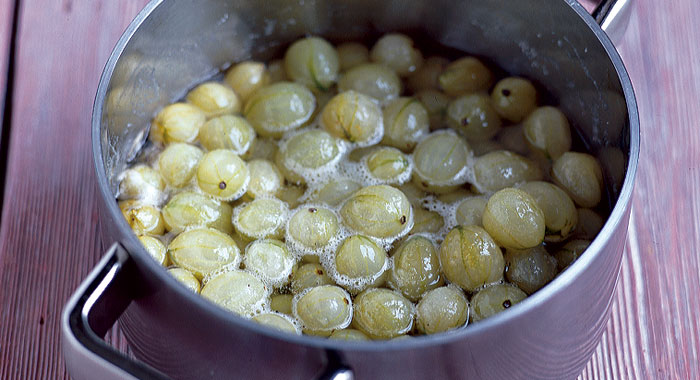
Pronounce it: gooz-bear-ree
The size of large grapes, but with a more spherical shape, gooseberries are related to the blackcurrant, and have been a popular British fruit since as far back as Elizabethan times. Early in the season they are bright green, with a veined effect on the skin, and quite hard and tart – they are best for cooking with, in particular to make the classic English pudding, gooseberry fool. Later on, softer, sweeter varieties become available, often yellow or red coloured – they are good eaten raw. Some varieties have sparse, thin hairs.
Availability
From May to September, and at their best from late June through to early August.
Choose the best
If you’re going to cook with them, look for slightly underripe – but not rock-hard – berries. For eating raw, choose berries that yield to the touch, and are juicy. If you can try before you buy, so much the better).
Prepare it
Top and tail (snip off the stem and the flower ends from each one with some kitchen scissors), then wash. If you’re planning to sieve the cooked berries there’s no need to top and tail.
Store it
In the fridge, for up to a week.
Cook it
Poach (10-15 minutes) and use to make crumbles or pies. Poach then purée to make gooseberry fool, ice cream, or a tart sauce.
Alternatives
Try cranberry.
Be the first to comment on "Gooseberry"